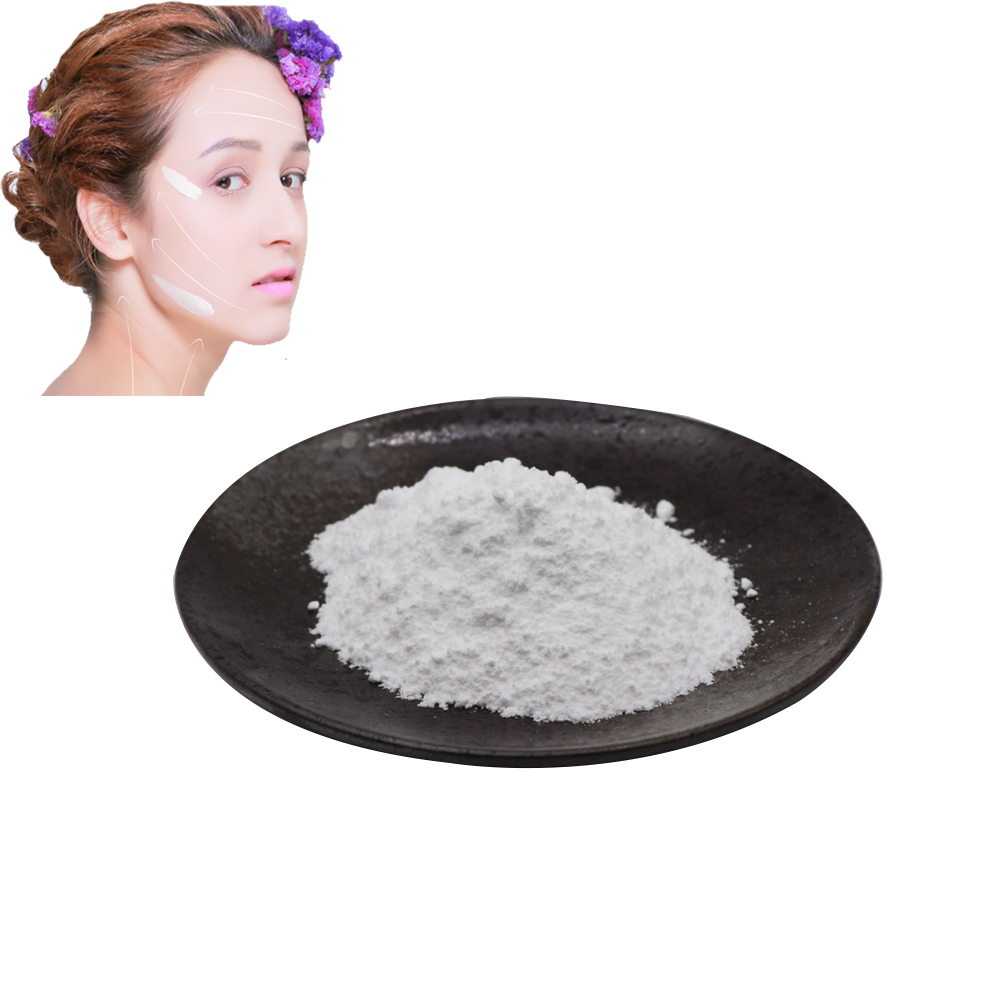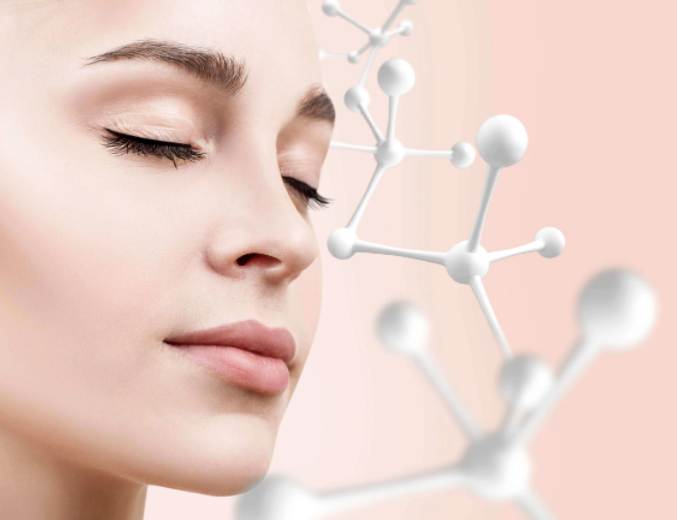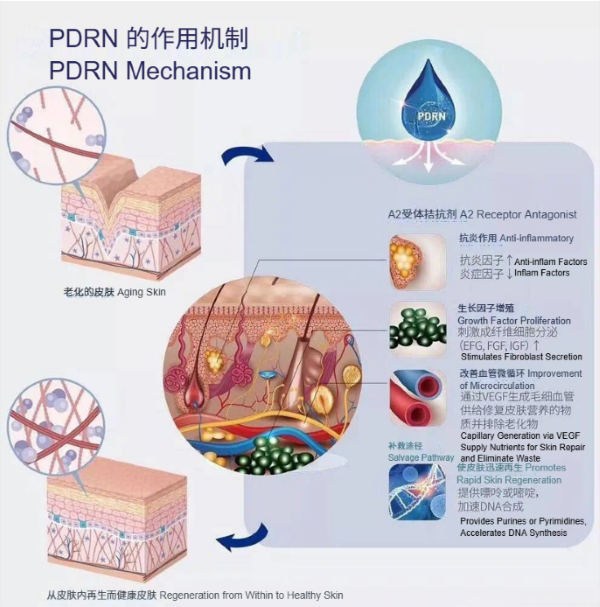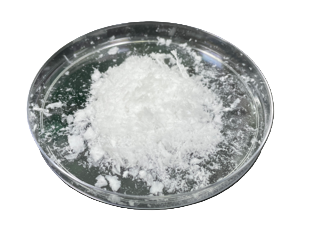Why is PDRN good for your skin?
In recent years, PDRN has emerged as one of the most promising ingredients in aesthetic and dermatological skincare treatments. Whether you're scrolling through beauty blogs or consulting a dermatologist about anti-aging procedures, chances are you've encountered the term PDRN—short for Polydeoxyribonucleotide. But what exactly is PDRN, and why is it considered a game-changer in skin rejuvenation?
In this comprehensive guide, we’ll dive deep into the science behind PDRN, explore its benefits, and discuss how it’s used in both clinical and cosmetic skincare. If you're serious about healthy, youthful-looking skin, this is one ingredient worth learning about.
What is PDRN?
PDRN Powder is a high-purity polydeoxyribonucleotide mixture derived from salmon sperm DNA through advanced purification and sterilization processes, sharing 95% similarity with human DNA for exceptional biocompatibility. Free from immune-triggering proteins/peptides, this clinically proven ingredient (approved in Italy since 2008) activates tissue regeneration via adenosine A2A receptor binding and nucleotide supply through the rescue pathway.
As a cosmetic and pharmaceutical raw material, PDRN is widely used in medical beauty, daily chemical products, medical equipment, health food, medicine and other fields.
Our PolyDeoxyRiboNucleotide powder have been certificated with the ISO certificate, we can provide the free sample of PDRN.

Origins in Medicine
Originally developed and used for wound healing, tissue regeneration, and burn treatment, PDRN has a long-standing history in regenerative medicine. Over time, researchers discovered its impressive effects on skin rejuvenation, leading to its rise in popularity within aesthetic dermatology and cosmetic skincare.

What is the advantage of PDRN?
PDRN is a safe material that does not present reaction of foreign substances
Increase elasticity of epidermal and dermal layers. Stable against heat
A biocompatible material is made by cutting DNA to a certain size.
Protect cells from UV-Induced DNA Damage.
How Does PDRN Work?
PDRN doesn’t just sit on the skin's surface—it actively participates in cellular repair and regeneration. Here’s how:
1. Cell Regeneration
PDRN works by stimulating fibroblast activity, the cells responsible for producing collagen, elastin, and other components of the extracellular matrix. This accelerates tissue repair and promotes the replacement of damaged or aged skin cells with new, healthy ones.
2. Anti-Inflammatory Properties
PDRN reduces pro-inflammatory cytokines while increasing anti-inflammatory cytokines, making it effective in calming irritated or sensitive skin. This makes it suitable for people dealing with rosacea, acne scars, or post-treatment redness.
3. Improved Microcirculation
PDRN has been shown to enhance angiogenesis, the formation of new blood vessels, which improves oxygen and nutrient supply to skin tissues—resulting in brighter, healthier-looking skin.
4. Activation of A2A Receptors
It activates specific receptors (adenosine A2A receptors) that are known to support tissue repair and decrease inflammation. This biological mechanism helps rejuvenate the skin at the cellular level.

Proven Benefits of PDRN for Your Skin
PDRN is not just a trendy ingredient—it’s supported by scientific research and clinical use. Here are the major skin benefits backed by evidence:
1. Anti-Aging Powerhouse
One of the biggest benefits of PDRN is its ability to reduce fine lines and wrinkles. By boosting collagen synthesis and cellular turnover, PDRN improves skin elasticity and density, leading to smoother, firmer skin.
2. Skin Repair and Healing
PDRN speeds up the healing of damaged or stressed skin, making it ideal after laser treatments, microneedling, or chemical peels. It promotes epidermal regeneration and dermal remodeling, improving skin structure from the inside out.
3. Hydration Boost
Many PDRN-based products help improve skin moisture retention by restoring the skin’s natural barrier function. This results in more supple and hydrated skin, especially beneficial for dry or mature skin types.
4. Scar and Pigmentation Reduction
Thanks to its regenerative and anti-inflammatory properties, PDRN helps reduce the appearance of scars, including acne scars, and can lighten post-inflammatory hyperpigmentation.
5. Brighter Complexion
With improved blood flow and renewed cellular activity, users often notice a more radiant and even-toned complexion after consistent use of PDRN.

How Is PDRN Used in Skincare?
PDRN can be found in a variety of medical and cosmetic formats:
1. Injectables (Skinboosters or Mesotherapy)
PDRN is often administered via microinjections into the dermis, commonly referred to as Rejuran, Healer Injection, or PN Therapy. This method ensures deep delivery and optimal effectiveness.
2. Topical Serums and Creams
More recently, PDRN has been incorporated into over-the-counter serums, ampoules, and creams. While not as intensive as injectables, topical formulations can still improve hydration, texture, and barrier function.
3. Post-Procedure Treatments
PDRN is commonly applied after ablative procedures like lasers or microneedling to speed up healing and reduce downtime.
.jpeg?width=6570&height=4380&name=AdobeStock_276306017%20(1).jpeg)
Who Should Use PDRN?
PDRN is versatile and suitable for a wide range of skin types and concerns, including:
Aging or mature skin
Dry and dehydrated skin
Acne-prone or scarred skin
Sensitive or inflamed skin
People undergoing aesthetic treatments looking to accelerate healing
However, those with fish allergies should avoid PDRN-based treatments, since it's derived from salmon DNA.

Recommended Use Level
1: Recommended PDRN addition level: 0.02% to 2%.
2: PDRN dissolution: PDRN generally dissolves faster in a 50°C water bath. Increasing the temperature accelerates dissolution, but excessive heat can degrade its molecular weight.
3: Suitable thickeners for PDRN: Xanthan gum, sodium hyaluronate (1% solution).
4: Emulsification: Surfactants with an HLB value greater than 9 are recommended for optimal emulsification with PDRN.
5: Preservation: Establish a composite preservative system for PDRN, which can include combinations like butylene glycol with pentylene glycol.
6: Incompatible ingredients: Strong oxidizing agents, highly reactive substances, and cationic salts.

Conclusion
If you're looking for a non-invasive, scientifically-backed solution to improve your skin's health, radiance, and resilience, PDRN is absolutely worth considering. With its regenerative capabilities, anti-inflammatory action, and deep hydration benefits, it has earned its place among the elite skin-repair agents available today.
Whether you're just starting your anti-aging journey or recovering from an intensive dermatological treatment, PDRN may be the missing ingredient your skincare routine needs.
Send Inquiry
Related Industry Knowledge
- Top 5 Benefits of Using Yeast Extract Beta Glucan Powder
- Glutathione and Your Skin: The Ultimate Guide
- BUTTERFLY PEA POWDER
- Cod Liver Oil: Benefits from Fish
- Coq10: Versatile Benefits For Women
- Organic Moringa Powder Nutrition and Health Benefits
- marigold flower extract uses for hair
- How to Add Eicosapentaenoic Acid to Your Diet?
- When Is The Best Time To Drink Kombucha?
- Skin and Hair Benefits of Roselle Extract Powder


